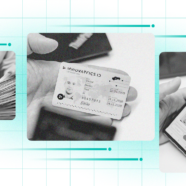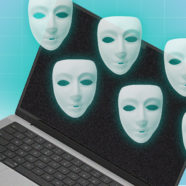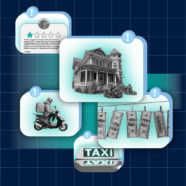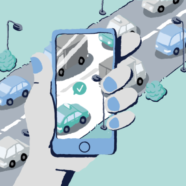- #all
- #banking
- #biometrics
- #business
- #culture
- #digital identity
- #elections
- #ethics
- #facial recognition
- #fingerprint recognition
- #government
- #iris recognition
- #NIST
- #onboarding
- #online elections
- #technology
- #trust
- #UX
- #voice recognition

How eKYC can make sharing economy apps safer
Mandatory in highly regulated fields like banking and communications, the Know Your Customer (KYC) process is a crucial part of onboarding for many companies. But would it also enhance trust on sharing economy platforms? We explore how electronic KYC that uses biometrics would make it easy, effortless and safe for both platforms and users.

Digital anthropologist Giles Crouch: “We use verifiable identities in the real world, it should be the same in the digital one.”
A Identity is a fuzzy thing. It is constantly changing as we grow up: child, student, parent, worker… each time we join different social groups in our lives, we find ourselves with a new kind of identity. And with technology, identity is no longer restricted to the offline world. So what does it mean, to have a digital identity? And why do we need to have a system to verify it? about culture, technology and identities – real and digital ones.

Verified social media: How can biometrics tame hate, hoaxes and fraud caused by anonymity?
Today's easy anonymity on social media creates an open avenue for scammers, cheaters and bots. Could biometric verification be the way to make these platforms friendlier and more “social” again? We explore the topic with Ján Lunter, CEO of Innovatrics, who thinks biometrics is key to social media security and safety.

Five threats in sharing economy apps and how biometrics could help fight back
Sharing economy platforms such as Uber or Airbnb should always have control over who is using the platform and how. However, in some cases, fraudsters and criminals are able to take advantage of sharing economy services and put the safety of users and the reputation of the platforms at serious risk. Read about five threats and scams that have occurred on sharing economy platforms and how the use of biometric technology could have prevented them.

How biometric identity verification protects passengers using
ride-hailing apps
To get home one night, you order a taxi through a ride-hailing app. You don’t check who your driver is because you don’t have to. With driver face verification and liveness check algorithms, you know that the ride-hailing app continuously verifies thousands of drivers, making all the rides you take safe.

Is facial recognition helping or hurting law enforcement?
While the majority of people in the United States approve of the police using facial recognition technology, experts warn that some may be relying on it too heavily, and that the level of human involvement still required cannot be underestimated.

Former NYPD inspector Joseph Courtesis:
“We create less bias when we use facial recognition algorithms in our work.”
Concerns about biometric recognition algorithms often come down to the issue of tackling racial or gender bias.

The magic of synthetic data: How nonexistent fingerprints help identify real criminals
To train a viable AI model, you need data. Lots of it. But what do you do if there just isn't enough? Simple: you make some up. Or, to put it in fancier terms, you “generate synthetic data”.

“Proving guilt requires more than a fingerprint match,” says the director of the Institute of Forensic Science
Biometric fingerprint identification has helped forensic experts in thousands of investigations. Yet, the fingerprint itself is just one piece of evidence evaluated by the court.

From measuring head length to advanced facial biometrics: The history of criminal identification
How did the police catch villains back in the old days, before the dawn of computers, fancy tech gadgets and automated biometric identification systems?








